1.
Field Mushroom (
Agaricus campestris).
-
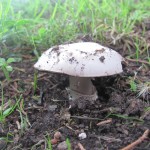
- 1. Field Mushroom
-
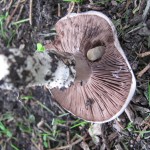
- 1. Field Mushroom
-
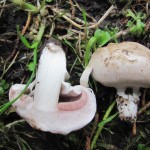
- 1. Field Mushroom
Growing on grass amongst scattered oak and poplar trees. Several scattered around. Cap 3-5cm. Pleasant mushroom smell. Gills pink on unopened buttons, brown on older open caps. ID is fairly likely. Sporeprint Dark brown.
2. Unidentified.
-
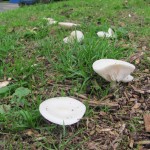
- 2. Unidentified
-
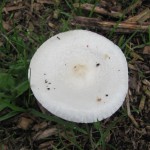
- 2. Unidentified
-
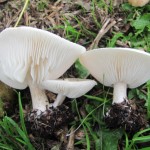
- 2. Unidentified
-
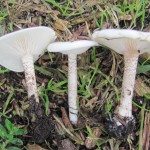
- 2. Unidentified
Growing on earth/wood debris amongst grass. Growing in troop and sometimes clustered. Cap 1-6cm. Short stem 1-2cm. Smell mushroomy, slightly sweet, almond. Rim inrolled on small caps, small slightly yellow coloured umbo, brown flecks on some stems. Can’t be a Clitopilus (spore print pink) and either doesn’t look like, or doesn’t have the right habitat for, any of the Clitocybes. Sporeprint white.
3.
Coprinus silvaticus.
-
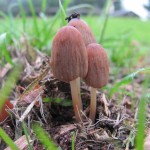
- 3. Coprinus silvaticus
-
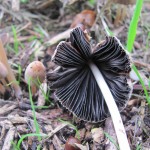
- 3. Coprinus silvaticus
-
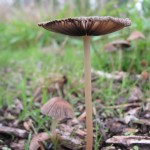
- 3. Coprinus silvaticus
-
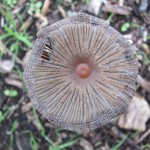
- 3. Coprinus silvaticus
Growing on earth/wood debris amongst grass. Several scattered around. Cap 0.5-3cm wide and about the same high, on young ones. No smell. Not totally sure that the old flat ones are the same species as the young ones, but seems likely. ID is fairly likely. Sporeprint black.
4.
Yellow Shield (
Pluteus chrysophaeus).
-
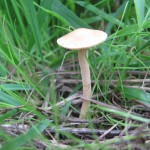
- 4. Yellow Shield
-
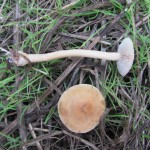
- 4. Yellow Shield
-
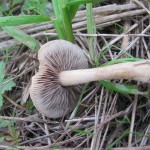
- 4. Yellow Shield
Growing on old straw or wood chips. Several scattered around. Cap 1-3cm, stem 2-5cm. No smell. Could be another type of Pluteus but Yellow Shield seems most likely. ID is fairly likely. Sporeprint Pale brown.
5.
Deer Shield (
Pluteus cervinus).
-
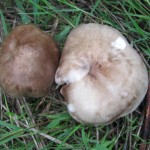
- 5. Deer Shield
-
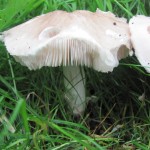
- 5. Deer Shield
-
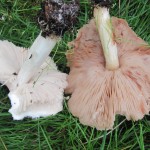
- 5. Deer Shield
Growing on earth/old straw/wood debris. Many scattered and clustered. Cap 6-12cm. Smell earthy. Gills first white then pinkish tan. ID is almost sure. Sporeprint pink/flesh coloured.
6.
Clustered Toughshank (
Collybia confluens).
-
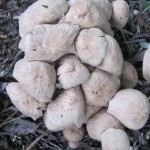
- 6. Clustered Toughshank
-
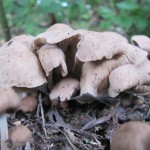
- 6. Clustered Toughshank
-
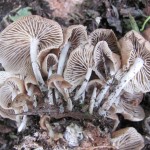
- 6. Clustered Toughshank
Apparently growing on old sawdust but amongst leaf litter. Several large clusters. Cap 1-5cm. Smell musty/mousey. Wrinkled/lined caps. Clustered Toughshank is supposed to have compressed stems which these didn't seem to have, but otherwise they look exactly right. ID is almost sure. Sporeprint white.
7.
Fairy Inkcap (
Coprinus disseminatus).
-
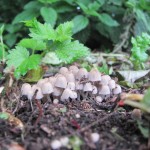
- 7. Fairy Inkcap
-
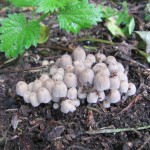
- 7. Fairy Inkcap
-
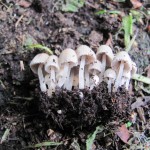
- 7. Fairy Inkcap
Growing on earth amongst sawdust/wood debris. A few large clusters. Tiny cap up to 8mm. Mashed up they had a slightly mushroomy smell. Tiny mushrooms - photos make them look bigger than they actually were. Sporeprint blackish brown.
8.
Agaricus gennadii.
-
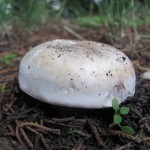
- 8. Agaricus gennadii
-
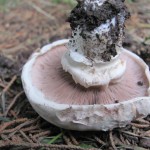
- 8. Agaricus gennadii
-
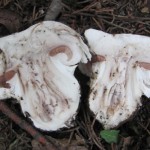
- 8. Agaricus gennadii
-
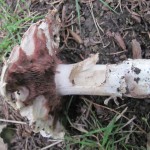
- 8. Agaricus gennadii
Growing under larch trees. Several scattered around. Cap 5-10cm. Somewhat chemically smell. Roger Phillips says this is very rare. ID is very likely. Sporeprint dark brown.



























